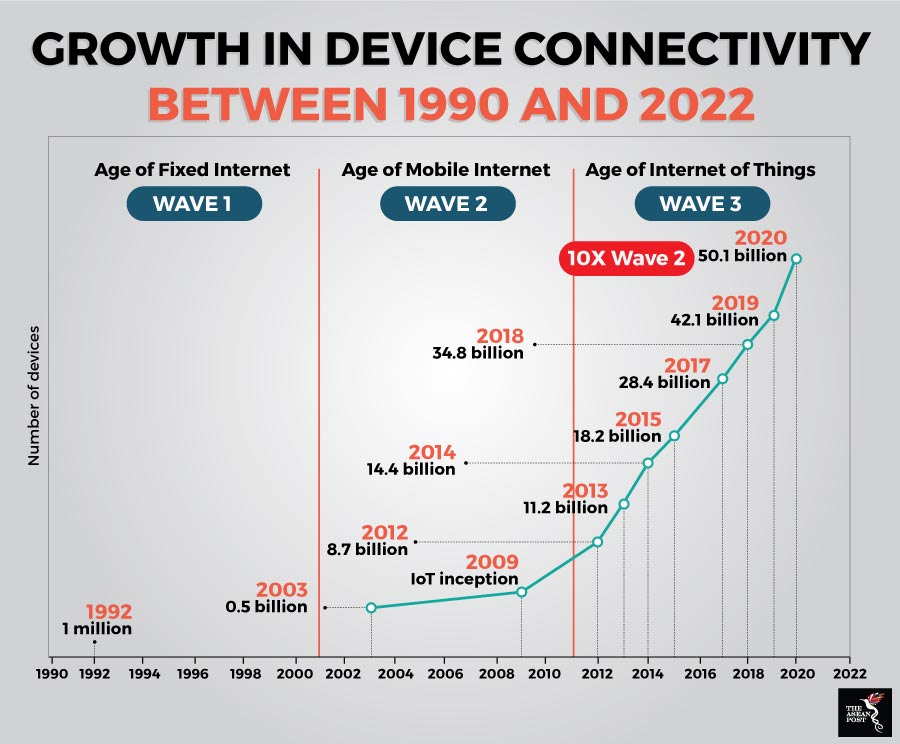The telecommunications industry in Southeast Asia is evolving quickly. The average revenue per user (ARPU) from voice calls is on a freefall giving way to increased usage of mobile data which is required to access a variety of applications like video and music streaming, e-hailing services and social media.
Consumers are increasingly becoming more affluent as the middle-class household segment continues to grow in Southeast Asia. A younger population where more than half are below the age of 45 is also contributing to the growth of the digital telecommunications ecosystem.
The rise of video on demand
Subscription-based fixed cable television is fast losing traction to the burgeoning number of over the top (OTT) content providers that distribute streaming media like Netflix and Spotify. Coupled with an uptick in interest for the competitive online gaming industry, telecommunications providers must contend with having to provide more bandwidth for mobile as well as fixed household broadband.
This opens up a lucrative opportunity for partnerships between telecommunications and OTT service providers. According to Digital TV Research, OTT services in the Asia-Pacific region generated US$8.3 billion in 2016, and this figure is set to triple to US$24 billion by 2022.
Two of the highest video viewing shares in the ASEAN region are live TV and smartphone. Current trends indicate that the smartphone share is set to increase at a breakneck pace as a younger society drives consumption demand, giving telecommunications players significant room to take advantage of.
Digital services
The number of voice calls made is also fast decreasing. Digital alternatives which are mobile data-based like WhatsApp and Viber are changing the call behaviours of Southeast Asians and driving up mobile data usage. The same can be seen for messaging where most people are moving away from short messaging service (SMS) and opting for mobile data driven applications.
Social media penetration within the ASEAN region stands at 55 percent – 13 percent higher than the global average. As more areas in the region get connected to the internet, the need for mobile data is set to increase exponentially. In the Asia-Pacific region alone, the need for mobile data is expected to increase by a compound annual growth rate (CAGR) of 73 percent.

Source: PwC
eSIM adoption
With the launch of the Apple Watch Series 3, eSIMs are gaining immense popularity and could be as common as white bread in the next few years. The eSIM or embedded SIM is an integrated digital SIM that is fixed in an electronic product, like the Apple Watch Series 3. The information stored on an eSIM is rewritable by operators which means that a user would be able to change operators by a mere call instead of having to physically replace a SIM card.
The aggressive introduction of eSIM-enabled devices into the ASEAN market over the next two years would lead to a change in distribution patterns as mobile operators will require less shelf space for SIM cards. This would translate to a more level playing field for smaller mobile network operators and the possibility of virtual mobile operators in the future.
eKYC regulations
Cybersecurity will always be a concern in the region especially as the telecommunications industry evolves to become a fully digital sector. Most ASEAN states are introducing stringent Electronic Know Your Customer (eKYC) regulations because of this.
Most regulations involve the capturing of key biometric data which is perceived as a cost to the operator. However, it can be turned into a lucrative revenue stream if it can be safely and securely used by other service providers like banks as a method of secure verification.
Privacy concerns may accompany such a shift. Most countries in the region are not yet open to liberal data localisation laws. However, in the right hands, responsible handling of such sensitive data in a cross-border scenario could give regional alliances an advantage over potential cyberattacks.
The demands of tomorrow’s digital consumer will probably be in a constant state of evolution. As a result, industry players – in this case from the telecommunications industry – must be able to understand and cater to the needs of their customers in the future.
This article was first published by The ASEAN Post on 6 September 2018 and has been updated to reflect the latest data.
Related articles:
